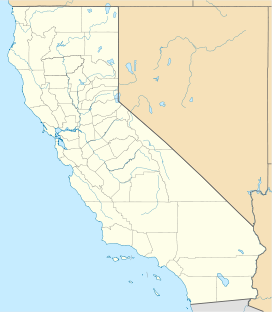Oyster Point Marina
| Oyster Point Park | |
|---|---|

Aerial photograph of Oyster Point Park and Marina, with San Bruno Mountain in the background. (2012)
|
|
| Type | San Mateo County Parks District |
| Location | 95 Harbormaster Rd. South San Francisco, California 94080 |
| Coordinates | 37°39′47″N 122°22′51″W / 37.663066°N 122.380743°WCoordinates: 37°39′47″N 122°22′51″W / 37.663066°N 122.380743°W |
| Area | 33 acres (13 ha) |
| Status | Open all year |
| Website | www |
Oyster Point Marina/Park is a 408-berth public marina and 33-acre (13 ha) park located in the city of South San Francisco, California on the western shoreline of San Francisco Bay.
The City of South San Francisco owns Oyster Point Marina/Park. The San Mateo County Harbor District has operated Oyster Point Marina/Park under a Joint Powers Agreement (JPA) with the City since 1977. The JPA terminates in 2026.
The marina is located close to nearby job centers in various office complexes and high rises in downtown of this city known as a regional biotech center. It includes a fuel dock, boat launching ramp, and fishing pier. In addition to boating and parkland, there are hiking and jogging trails, picnic areas, and 2.5 acres (1.0 ha) of sandy beaches.
The Oyster Point Landfill is a closed, unlined Class III landfill that was in operation from 1956 to 1970. Prior to 1956, what would become the Oyster Point Landfill area consisted of tidal marshlands and upland soils and bedrock.
Between 1956 and 1970, the City of South San Francisco leased the site (approximately 57 acres (23 ha)) to the now defunct landfill operator The South San Francisco Scavenger Company.
In 1956, Scavenger began disposal operations at the landfill. Initially, municipal solid waste was disposed of on the ground and burned. This activity ended in 1957 following the enactment of laws prohibiting open air burning of rubbish in the Bay Area. To address the new air quality restrictions South City and Scavenger established a solid waste disposal site on the submerged lands just east of the original Oyster Point.
The landfill was developed in three phases. Filling of the first section began in 1957 and was completed by late 1961. The first area to be filled extended into the Bay about 1,500 feet (460 m) eastward from the original bluff. Scavenger placed waste directly into the tidelands and used a wire fence to control the discharge of solids into the Bay due to tidal action. Waste disposal operations eventually resulted in the relocation of the shoreline approximately 3,000 feet (910 m) to the east of the pre-landfill shoreline.
The landfill material is as deep as 45 feet (14 m), consisting of poorly compacted municipal and industrial waste. Typical waste found within the landfill includes the following: chemicals, drums, paper, cardboard, organic matter, wood, glass, metal, rubber, rocks, concrete, and other materials. The base of the landfill material has been compressed into, and mixed with, the upper part of the Bay Mud. The volume of waste in the landfill is approximately 2,500,000 cubic yards (1,900,000 m3) and total weight of this material is approximately 1,400,000 short tons (1,300,000 t). This volume of waste would cover a football field almost to the height of the Empire State Building.
...
Wikipedia



